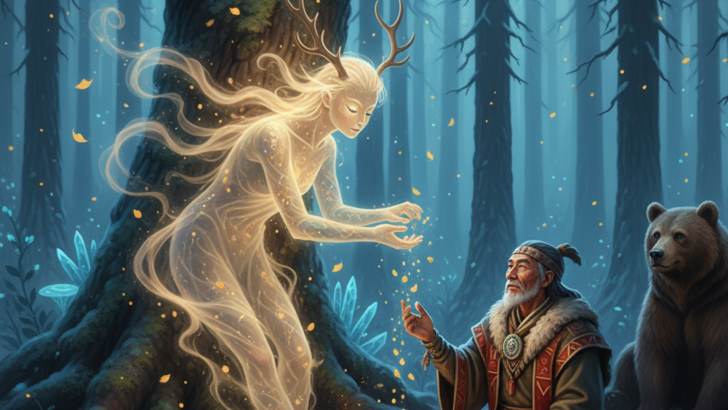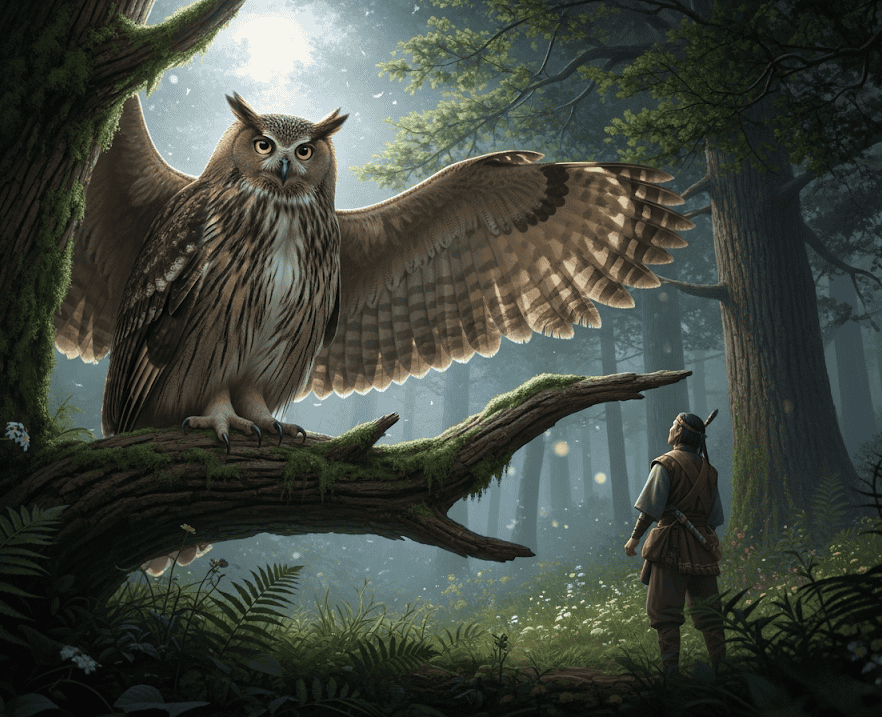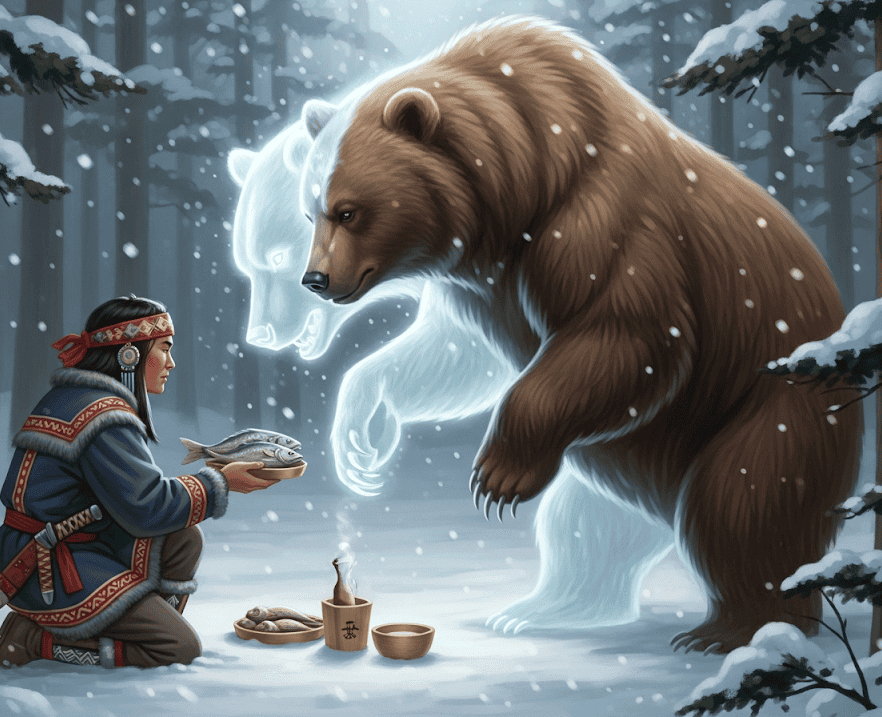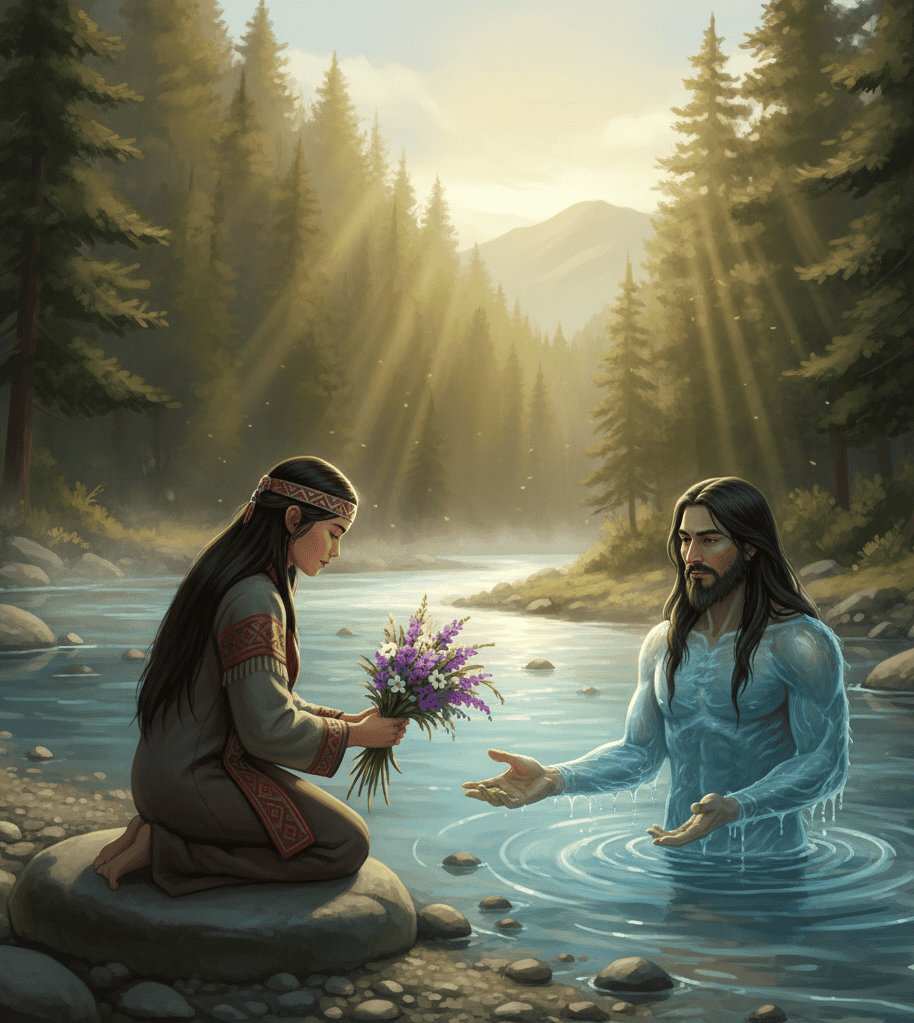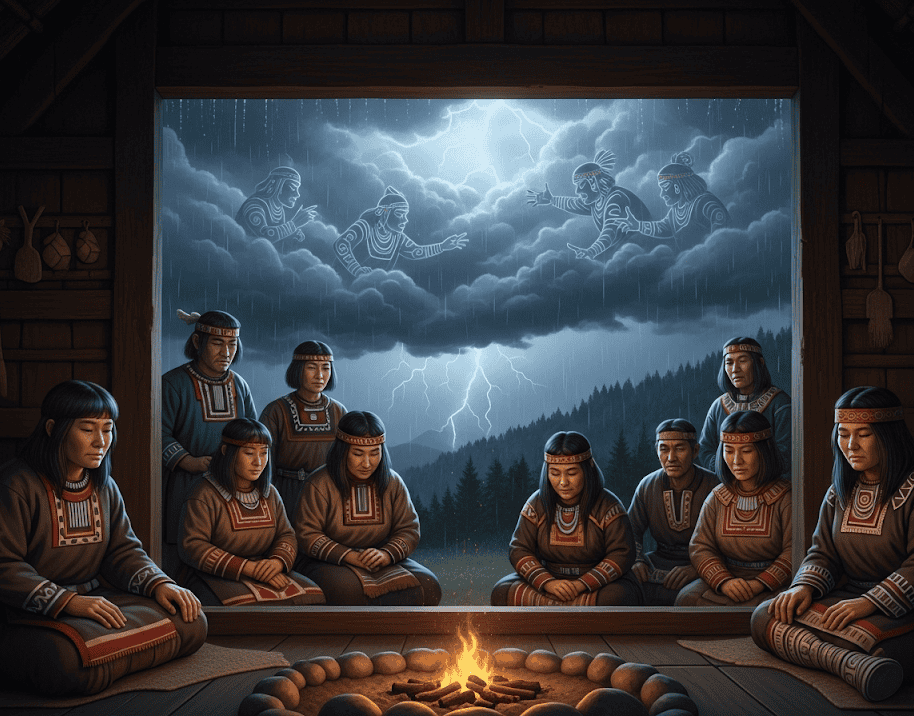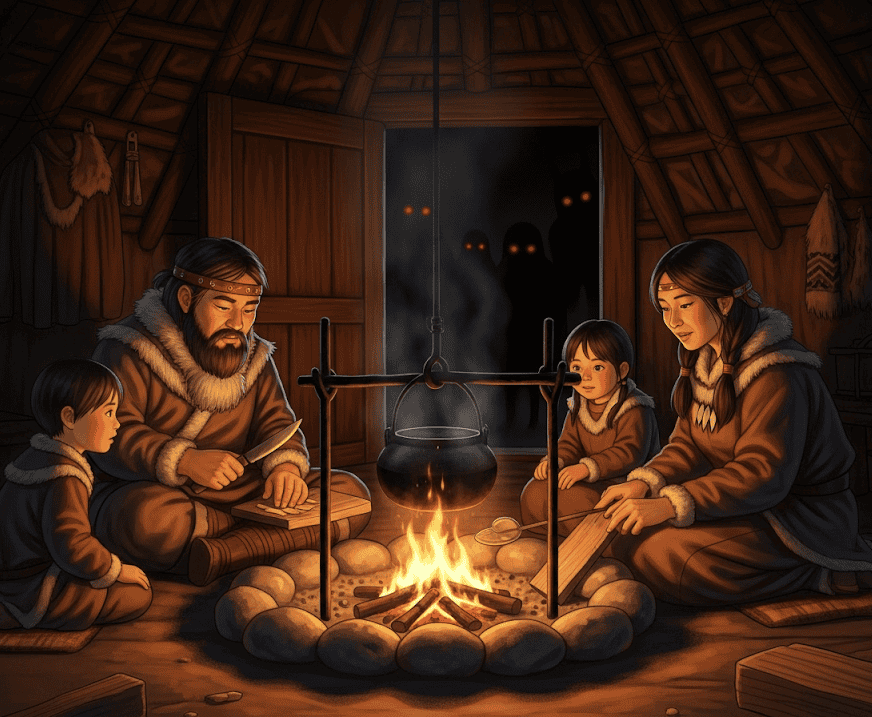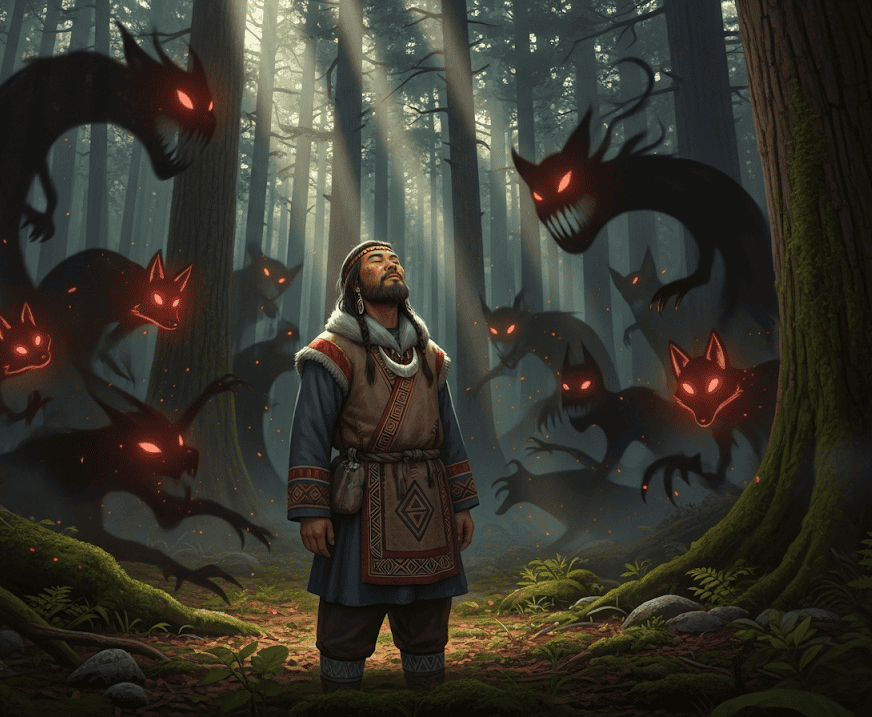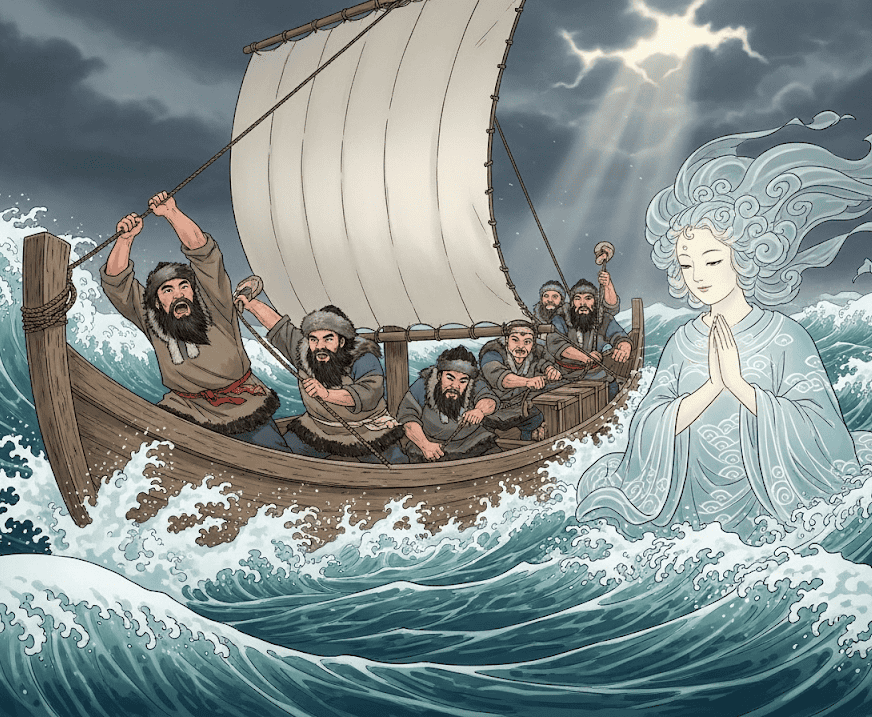Fear is one of the oldest emotions we carry. Long before psychologists studied it, storytellers used myths to help people understand, face, and sometimes even laugh at fear.
Among the Ainu people of northern Japan and Hokkaido, myths were more than entertainment. They were guidebooks for survival, spiritual growth, and inner peace.
Many of their stories feature gods, animals, and spirits who teach humans what to do when shadows feel too long and worries too heavy.
Let’s step into seven Ainu myths that gently remind us how to cope with fear.
1. The Owl Kamuy and the Watcher of the Night
In Ainu tradition, owls are sacred messengers who carry warnings and wisdom. One tale tells of an Owl Kamuy who perches on a village edge, watching quietly through the night.
The people often felt uneasy about his large eyes glowing in the dark, but the owl was not a monster. He was a protector.
This myth teaches a simple trick for fear. Instead of running from the things that stare back at you, try to see them as guardians.
That shadow in your life might be a teacher in disguise. The Owl Kamuy whispers that fear can sometimes be a signal to stay alert, but not to panic. Like the villagers, you can learn to see watchful presences as allies.
2. The Bear Spirit and the Hunter’s Doubt
The bear, or Kimun Kamuy, was one of the most powerful spirits in Ainu stories. Bears were feared and revered, both hunted and honored in elaborate rituals.
In one myth, a hunter feared he had angered the bear spirit. His sleep was filled with nightmares of growls and heavy footsteps.
Eventually, the hunter approached the spirit with offerings, showing respect instead of hiding. The bear forgave him, turning fear into peace.
This story teaches that fear grows louder when you avoid it. Facing the source with respect, even when trembling, often shrinks the shadow.
Sometimes your mind is just asking you to face what feels unbearable, and once you do, the growling quiets down.
3. The River God and the Drowning Dream
The rivers of Hokkaido were both gifts and dangers. They fed villages with fish but also swallowed lives in floods.
In one myth, a young woman dreamed she was pulled under by the River God. Each night, she woke in terror, convinced the spirit was hunting her.
An elder told her to offer words of gratitude by the water instead of fearing it. She left offerings of flowers and whispered thanks.
The dreams ended, and she learned to see the river as a friend. Here, we learn that gratitude is one of the oldest tools for fear.
Instead of focusing only on what might harm us, we can balance fear with appreciation. The River God story shows that even powerful forces can feel less frightening when honored with respect and acknowledgment.
4. The Thunder Spirits and the Fear of Storms
Thunderstorms were frightening events for the Ainu. Roaring skies felt like battles among gods. One myth tells of thunder spirits who argued loudly, crashing and flashing to release their anger.
Children would cry, and villagers would huddle together. But the elders taught that the storm was not meant to hurt them.
It was simply the gods releasing tension. This myth is comforting because it reframes a terrifying sound. It says storms are not personal attacks but cosmic quarrels that pass quickly.
In daily life, it reminds us that the scary noise in our minds often has little to do with us. Just as thunder rolls away, so do most moments of fear if we wait with patience.
5. The Fire Goddess and the Comfort of the Hearth
Fire was sacred to the Ainu, not just for warmth but as a goddess herself, Apehuci Kamuy. In one story, people feared wandering spirits at night.
They believed these restless souls lingered in the darkness outside. But the Fire Goddess promised safety as long as the hearth flame was kept alive.
Families would gather around the fire, finding comfort and protection in her glow. This tale teaches the importance of creating safe spaces when fear overwhelms us.
The Fire Goddess says that light, warmth, and togetherness are stronger than shadows.
Today, this could be a candle, a cozy blanket, or the company of loved ones. When fear prowls outside, building a circle of light inside is a timeless way to cope.
6. The Fox Spirit and the Trick of Illusion
Foxes in Ainu stories are clever tricksters. One myth tells of a fox who frightened travelers by creating illusions in the forest.
Shadows turned into monsters, and whispers echoed through the trees. Many ran away in terror, but one wise traveler stopped, took a deep breath, and realized the illusions were only tricks.
The fox laughed and vanished, leaving the traveler unafraid. This story is a perfect reminder that many fears are illusions.
Our minds can turn small worries into giant shadows. By pausing, breathing, and questioning the fear, we sometimes discover it is nothing more than a playful trick of the imagination.
7. The Sea Goddess and the Courage to Travel
The Ainu also told stories of Repun Kamuy, the sea goddess. She could be generous with fish but also terrifying with storms.
One story speaks of fishermen who were too afraid to set sail after hearing tales of her anger.
Yet an elder reminded them that courage does not mean ignoring danger; it means moving forward with respect and preparation.
The fishermen prayed, gave thanks, and set out carefully. The sea rewarded their bravery with a safe journey.
This myth reveals that courage is not the absence of fear but the choice to keep going despite it. Fear can freeze us, but with preparation and respect, we can step forward.
The sea goddess teaches that even when the waters look rough, fear can be a compass guiding us toward strength.

私は生まれたときから、常に神との強いつながりを感じていた。作家として、また指導者として、私の使命は、人々が最も暗い時代に愛と幸福と内なる強さを見つけるのを助けることである。

